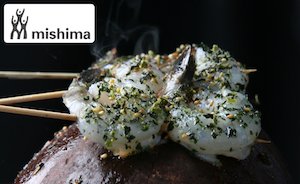 (Gerry Furth-Sides) Spices are an excellent introduction to a new ethnic cuisine. Mishima Foods line is one example of how it works. We first encountered the product in the garden of the Los angeles Japanese Consul at the Kompai! film party. The idea here is to show consumers how it can be used on different American (popcorn) and Asian foods.
(Gerry Furth-Sides) Spices are an excellent introduction to a new ethnic cuisine. Mishima Foods line is one example of how it works. We first encountered the product in the garden of the Los angeles Japanese Consul at the Kompai! film party. The idea here is to show consumers how it can be used on different American (popcorn) and Asian foods.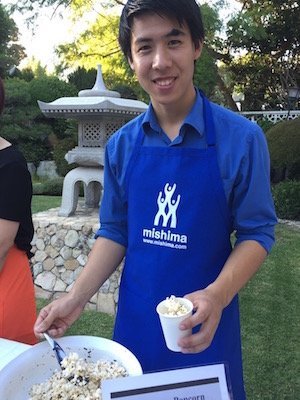
Mishima U.S.A., subsidiary of an established seasonings and prepared foods manufacturer headquartered in Japan with a subsidiary in Dalian, China. The was founded in Los Angeles in 1988 to introduce “furikake” (see description below) oriental seasonings to the retail Asian market.

Mishima products received such an overwhelming response in the Asian market when the company introduced them in 1988 that the company recently introduced a new food line to the mainstream market. They have been expanding ever since. An innovative new line is in the form of retort pouch products, made at a production site in mainland China.

The seasoning is already used by Asian catering chefs and restaurants in their dishes. And it is sold wholesale for snacks. The home use products are all under $5.

We used it in a salad with wild sardines, sun-dried tomato, cheese croutons, chopped green onion and hair-covert. The dried green seaweed and roasted black seaweed added a crunch and a taste of the sea to the dish. With the roasted white and black sesame seed, we really didn’t even need the croutons.
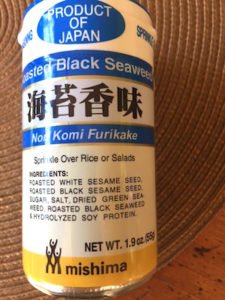
The wonderful, fat little bottle is usable empty because the entire label peels off. Ingredients are clearly listed on the front.
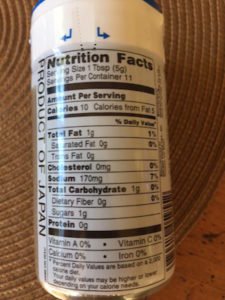
The textured Roasted Black Seaweed seasoning only has one gram of sugar added, and 7% of the sodium is from the seaweed salt in it – not enough to leave you the least bit thirsty afterward. Hydrolyzed soy protein. And it has 10 calories per tablespoon with no apparent health benefits because there is such a small amount of healthy seaweed and sesame.
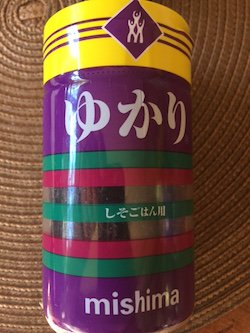
The purple-red shiso leaves (akajiso) are best known for coloring pickled plums. While the red leaves themselves are not very amenable to use as a raw salad leaf, germinated sprouts (me-jiso) have been used for centuries as a garnish to accent Japanese dishes. It is common on sashimi.
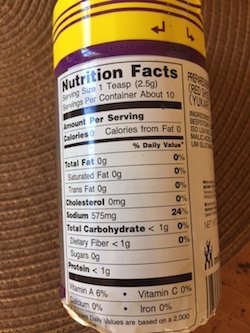
The good news is that there are no sugars. The not-so-good news is that the Red Shiso Leaves or Yukari has malic acids and monosodium glutamate added.
Furikake is a dry Japanese seasoning sprinkled on top of cooked rice, vegetables, and fish. It typically consists of a mixture of dried and ground fish, sesame seeds , chopped seaweed, sugar, salt, and monosodium glutamate. Other flavorful ingredients added to the mixture can include dried fish, egg, powdered miso or vegetables.
Furikake is often brightly colored and flaky. It can have a slight fishy or seafood flavoring, and is sometimes spicy. It can be also used in Japanese cooking for pickling foods and for rice balls.
Since 2003, furikake has increasingly gained acceptance in the US (particularly in Hawaii and the West Coast) early this century as a seasoning for baked or fried fish, raw fish salads and snack foods. There is even a furikake party mix (shown above at the party.)
Outside Japan, furikake can be found in most Asian groceries or in the ethnic food aisle of some major supermarkets.
One account of the origin of furikake is that it was developed during the Taisho period (1912–1926) by a pharmacist to remedy calcium deficits in the Japanese population at the time. Suekichi Yoshimaru, who lived in the Kumamoto prefecture, developed a mixture of ground fish bones with roast sesame seeds, poppy seeds, and seaweed that was made into a powder. He called this product Gohan No Tomo or “A Friend For Rice
A food company in Kumamato later acquired the product and was able to sell it commercially. It was sold in a flask-like container shaped with a narrow neck to prevent moisture from seeping into the product.





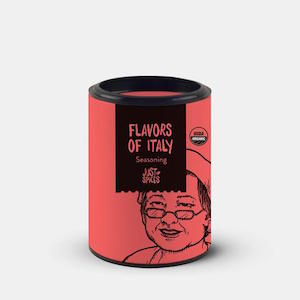
 “We especially enjoyed the spicy and aromatic kitchen of India. There, ancient spices such as cardamom, cumin and red pepper to make this original chickpea curry.
“We especially enjoyed the spicy and aromatic kitchen of India. There, ancient spices such as cardamom, cumin and red pepper to make this original chickpea curry.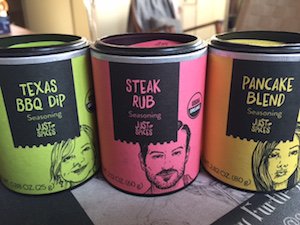
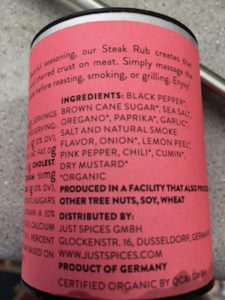 The rub contains only organic, natural ingredients. It is meant to infuse the famous Texas flavor and charred crust on meats whether it is beef or pork or lamb. Brown cane sugar accounts for the crust. We love it and use it on our steaks (all cuts) and even lamb chops and sweet or russet potatoes.
The rub contains only organic, natural ingredients. It is meant to infuse the famous Texas flavor and charred crust on meats whether it is beef or pork or lamb. Brown cane sugar accounts for the crust. We love it and use it on our steaks (all cuts) and even lamb chops and sweet or russet potatoes.
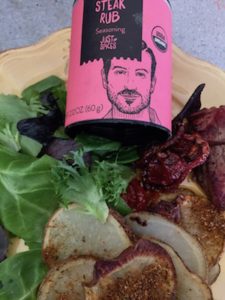 The combination also includes black pepper, paprika, garlic salt, natural smoke flavor, onion, crushed pink pepper, oregano, earthy cumin, a bold mustard with a bite.
The combination also includes black pepper, paprika, garlic salt, natural smoke flavor, onion, crushed pink pepper, oregano, earthy cumin, a bold mustard with a bite.
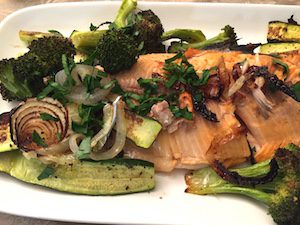
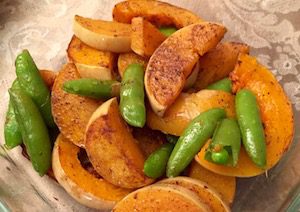

 Gerry Furth-Sides
Gerry Furth-Sides  Barbara Hansen
Barbara Hansen  Chef-owner Alain Cohen
Chef-owner Alain Cohen  Roberta Deen
Roberta Deen  Jose Martinez
Jose Martinez  Nivedita Basu
Nivedita Basu